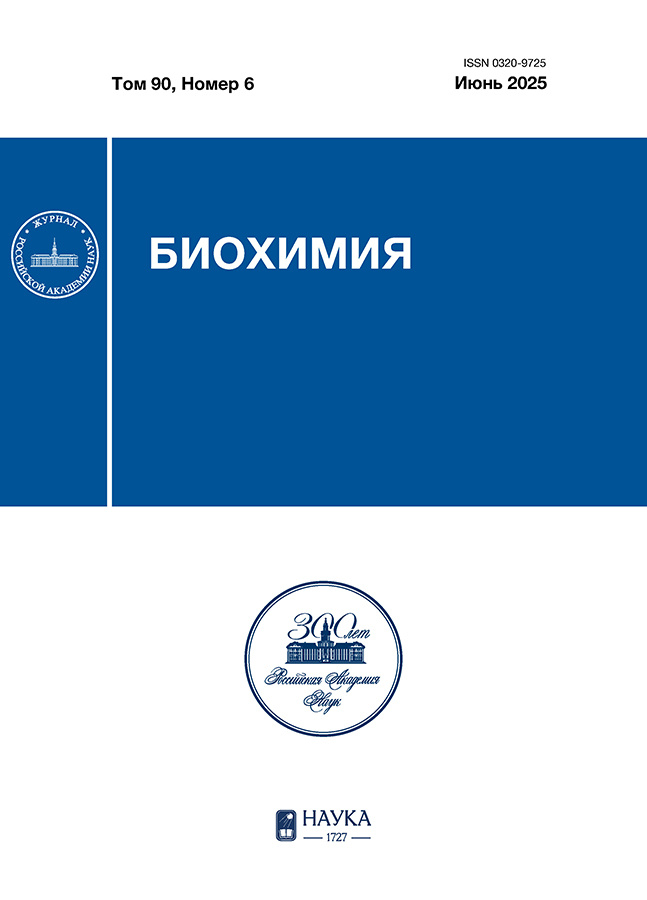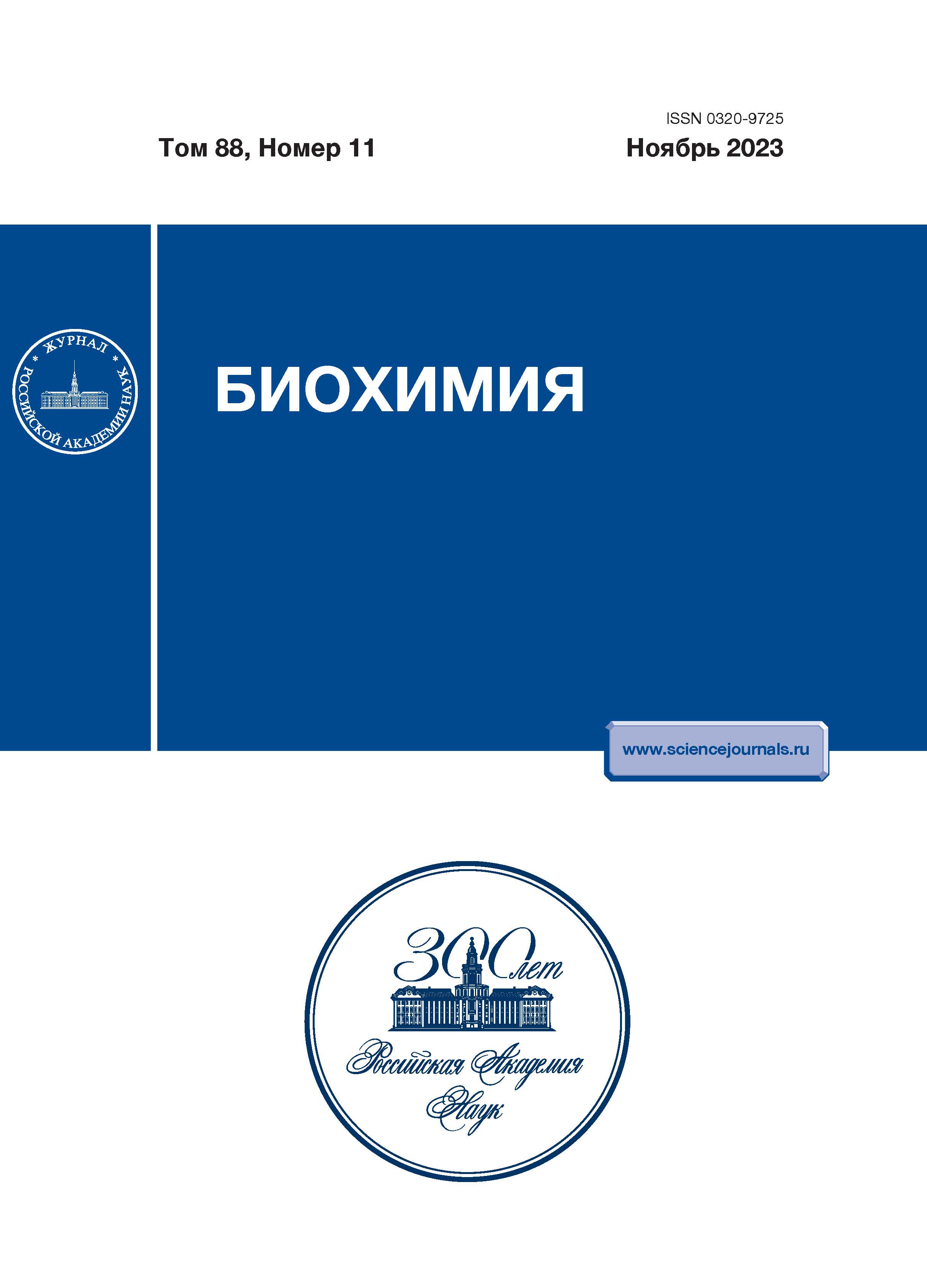The function of the conserved “non-functional” residues in apomyoglobin is to provide and preserve the correct protein topology
- Authors: Bychkova V.E1, Dolgikh D.A2, Balobanov V.A1
-
Affiliations:
- Institute of Protein Research, Russian Academy of Sciences
- Shemyakin-Ovchinnikov Institute of Bioorganic Chemistry, Russian Academy of Sciences
- Issue: Vol 88, No 11 (2023)
- Pages: 2308-2313
- Section: Regular articles
- URL: https://ter-arkhiv.ru/0320-9725/article/view/665512
- DOI: https://doi.org/10.31857/S0320972523110192
- EDN: https://elibrary.ru/MNCECS
- ID: 665512
Cite item
Abstract
In this paper the answer to O. B. Ptitsyn’s question “What is the role of conserved non-functional residues in apomyoglobin” is presented, which is based on the research results of three laboratories. The role of conserved non-functional apomyoglobin residues in formation of native topology in the molten globule state of this protein is revealed. This fact allows suggesting that the conserved non-functional residues in this protein are indispensable for fixation and maintaining main elements of the correct topology of its secondary structure in the intermediate state. The correct topology is a native element in the intermediate state of the protein.
About the authors
V. E Bychkova
Institute of Protein Research, Russian Academy of Sciences142290 Pushchino, Moscow Region, Russia
D. A Dolgikh
Shemyakin-Ovchinnikov Institute of Bioorganic Chemistry, Russian Academy of Sciences117871 Moscow, Russia
V. A Balobanov
Institute of Protein Research, Russian Academy of Sciences
Email: balobanov@phys.protres.ru
142290 Pushchino, Moscow Region, Russia
References
- Kim, P. S., and Baldwin, R. L. (1990) Intermediates in the folding reactions of small proteins, Ann. Rev. Biochem., 59, 631-660, doi: 10.1146/annurev.bi.59.070190.003215.
- Ptitsyn, O. B. (1991) How does protein synthesis give rise to the 3D-structure? FEBS Lett., 285, 176-181, doi: 10.1016/0014-5793(91)80799-9.
- Dill, K. A., Fiebig, K. M., and Chan, H. S. (1993) Cooperativity in protein folding kinetics, Proc. Natl. Acad. Sci. USA, 90, 1942-1946, doi: 10.1073/pnas.90.5.1942.
- Ptitsyn, O. B. (1973) Stages in the mechanism of self-organisation of protein molecules, Dokl. Akad. Nauk SSSR, 210, 1213-1215.
- Karplus, M., and Weaver, D. L. (1994) Protein folding dynamics: the diffusion-collision model and experimental data, Protein Sci., 3, 650-668, doi: 10.1002/pro.5560030413.
- Abkevich, V. I., Gutin, A. M., and Shakhnovich, E. I. (1994) Specific nucleus as the transition state for protein folding: evidence from the lattice model, Biochemistry, 33, 10026-10036, doi: 10.1021/bi00199a029.
- Guo, Z., and Thirumalai, D. (1995) Kinetics of protein folding: nucleation mechanism, time scales, and pathways, Biopolymers, 36, 83-102, doi: 10.1002/bip.360360108.
- Wolynes, P. G., Onuchic, J. N., and Thirumalai, D. (1995) Navigating the folding routes, Science, 267, 1619-1620, doi: 10.1126/science.7886447.
- Finkelstein, A. V., and Badretdinov, A. Y. (1997) Rate of protein folding near the point of thermodynamic equilibrium between the coil and the most stable chain fold, Fold. Des., 2, 115-121, doi: 10.1016/s1359-0278(97)00016-3.
- Fersht, A. R. (1995) Optimization of rates of protein folding: The nucleation-condensation mechanism and its implications, Proc. Natl. Acad. Sci. USA, 92, 10869-10873, doi: 10.1073/pnas.92.24.10869.
- Shakhnovich, E. I., Abkevich, V., and Ptitsyn, O. B. (1996) Conserved residues and the mechanism of protein folding, Nature, 379, 96-98, doi: 10.1038/379096a0.
- Ptitsyn, O. B., and Ting, K. L. (1999) Non-functional conserved residues in globins and their possible role as a folding nucleus, J. Mol. Biol., 291, 671-682, doi: 10.1006/jmbi.1999.2920.
- Jennings, P., and Wright, P. E. (1993) Formation of a molten globule intermediate early in the kinetic folding pathway of myoglobin, Science, 262, 892-896, doi: 10.1126/science.8235610.
- Samatova, E. N., Melnik, B. S., Balobanov, V. A., Katina, N. S., Dolgikh, D. A., Semisotnov, G. V., Finkelstein, A. V., and Bychkova, V. E. (2010) Folding intermediate and folding nucleus for I-N and U-I-N transitions in apomyoglobin: Contributions by conserved and non-conserved residues, Biophys. J., 98, 1694-1702, doi: 10.1016/j.bpj.2009.12.4326.
- Elieser, D., Jennings, P. A., Wright, P. E., Doniach, S., Hodgson, K. O., and Tsuruta, H. (1995) The radius of gyration of an apomyoglobin folding intermediate, Science, 270, 487-488, doi: 10.1126/science.270.5235.487.
- Hughson, F. M., Wright, P. E., and Baldwin, R. L. (1990) Structural characterization of a partly folded apomyoglobin intermediate, Science, 249, 1544-1548, doi: 10.1126/science.2218495.
- Jamin, M., and Baldwin, R. L. (1998) Two forms of the pH 4 folding intermediate of apomyoglobin, J. Mol. Biol., 276, 491-504, doi: 10.1006/jmbi.1997.1543.
- Shastry, M. C. R., and Roder, H. (2004) Evidence for barrier-limited protein folding kinetics on the microsecond time scale, Nat. Struct. Biol., 5, 385-392, doi: 10.1038/nsb0598-385.
- Roder, H., Maki, K., and Cheng, H. (2006) Early events in protein folding explored by rapid mixing methods, Chem. Rev., 106, 1836-1861, doi: 10.1021/cr040430y.
- Xu, M., Beresneva, O., Rosario, R., and Roder, H. (2012) Microsecond folding dynamics of apomyoglobin at acidic pH, J. Phys. Chem. B, 116, 7014-7025, doi: 10.1021/jp3012365.
- Mizukami, T., Xu, M., Fazlieva, R., Bychkova, V. E., and Roder, H. (2018) Complex folding landscape of apomyoglobin at acidic pH revealed by ultrafast kinetic analysis of core mutants, J. Phys. Chem. B, 122, 11228-11239, doi: 10.1021/acs.jpcb.8b06895.
- Nishimura, C., Dyson, H. J., and Wright, P. E. (2006) Identification of native and non-native structure in kinetic folding intermediates of apomyoglobin, J. Mol. Biol., 355, 139-156, doi: 10.1016/j.jmb.2005.10.047.
- Aoto, P. C., Nishimura, C., Dyson, H. J., and Wright, P. E. (2014) Probing the non-native H helix translocation in apomyoglobin folding intermediates, Biochemistry, 53, 3767-3780, doi: 10.1021/bi500478m.
- Musto, R., Bigotti, M. G., Travaglini-Allocatelli, C., Brunori, M., and Cutruzzola, F. (2004) Folding of Aplysia limacina apomyoglobin involves an intermediate in common with other evolutionarily distant globins, Biochemistry, 43, 230-236, doi: 10.1021/bi035319l.
- Балобанов В. А., Ильина Н. Б., Катина Н. С., Кашпаров И. А., Долгих Д. А., Бычкова В. Е. (2010) Кинетика взаимодействия между апомиоглобином и фосфолипидными мембранами, Мол. Биол. (Москва), 44, 708-711.
- Bychkova, V. E., Basova, L. V., and Balobanov, V. A. (2014) How membrane surface affects protein structure, Biochemistry (Moscow), 79, 1483-1514, doi: 10.1134/S0006297914130045.
- Ptitsyn, O. B. (1998) Protein folding and protein evolution: common folding nucleus in different subfamily of c-type cytochromes? J. Mol. Biol., 278, 655-666, doi: 10.1006/jmbi.1997.1620.
- Rotondi, K. S., and Gierasch, L. M. (2003) Local sequence information in cellular retinoic acid-binding protein I: specific residue roles in beta-turns, Biopolymers, 71, 638-651, doi: 10.1002/bip.10592.
- Rotondi, K. S., and Gierasch, L. M. (2003) Role of local sequence in the folding of cellular retinoic acid-binding protein I: structural propensities of reverse turns, Biochemistry, 42, 7976-7985, doi: 10.1021/bi034304k.
- Gunasekaran, K., Haqler, A. T., and Gierasch, L. M. (2004) Sequence and structural analysis of cellular retinoic acid-binding proteins reveal a network of conserved hydrophobic interactions, Proteins, 54, 179-194, doi: 10.1002/prot.10520.
- Ting, K.-L. H., and Jernigan, R. L. (2002) Identifiing a folding nucleus for the lysozyme/alfa-lactalbumin family from sequence conservation clusters, J. Mol. Evol., 54, 425-436, doi: 10.1007/s00239-001-0033-x.
Supplementary files











